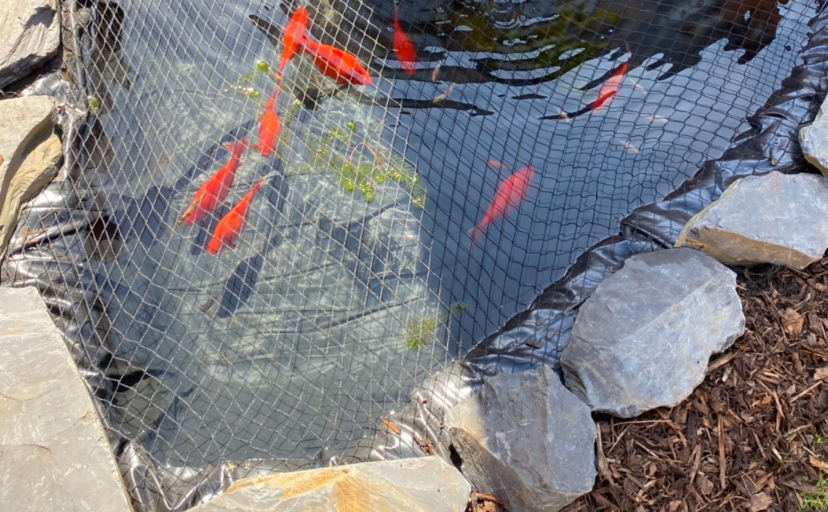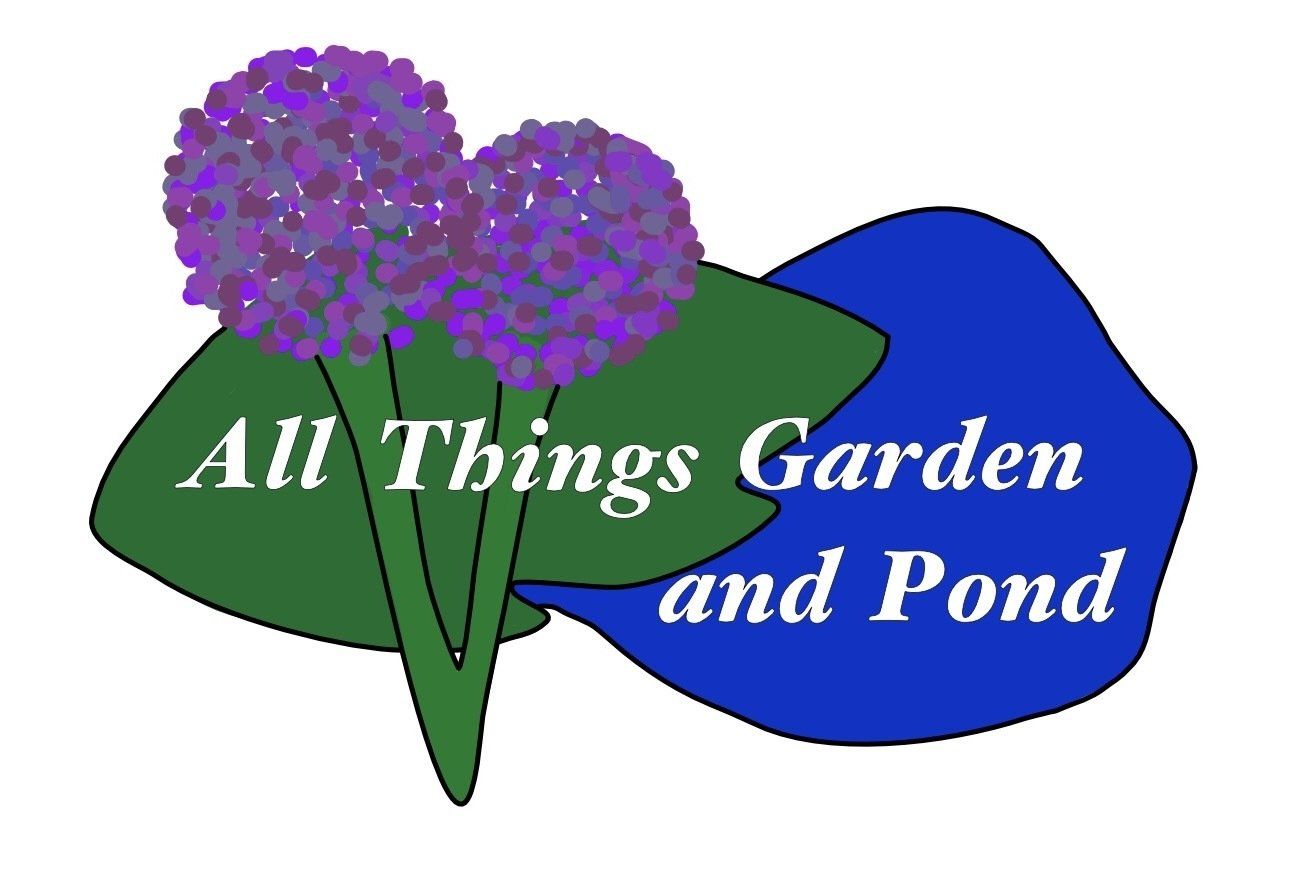Pond Guides

Fish Care and Parasite Detection
Keeping pond fish healthy should start with the water quality of the pond. Fish who live in ponds with poor water quality are more likely to have raised stress levels in response to their environment, which in turn weakens their immune system, leaving fish vulnerable to attack from a wide range of infectious organisms in the pond – known as pathogens. Other ways that we may suppress a fish’s immune system are by overstocking the pond, not providing enough dissolved oxygen, not monitoring pH and KH or feeding inappropriately.
Your fish’s immune system however works to seasonally-induced temperature changes, and this is one factor that we can’t really control. Research shows that the important antibody response is suppressed in koi fish in water temperatures below 14⁰C. However, most pathogens also become less active in cooler water; for example the white spot parasite life cycle turns once every 6-7 days at 20⁰C, it may take months below 10⁰C. As water temperatures rise in spring, pathogens can rapidly become more active, though the immune system of the fish can take longer to catch up, which allows a window of infection when the fish is vulnerable to attack. Good pond monitoring is the best way to keep an eye out for signs of fish infection. These signs can include flicking, flashing, excessive mucous covering, lethargy, respiratory distress and ragged fins.
We stock a wide range of the latest water testing products and fish parasite treatments to help with any current issues you may be experiencing within your pond or with your fish.
Please note: Treating a pond with limited or no evidence of bad water quality or fish infection can cause more harm than good, so it’s always best to have all the facts before any treatments are carried out.
Click the link below to view our range of pond testing and treatments available

Pond Water Changes
Water Changes - Why we carry out water changes? What are the benefits for Your fish stock?
All different types of filters are working alongside our fish ponds to house millions of beneficial bacteria, which work to break down harmful ammonia and nitrites from waste into less harmful substances which is a process called the nitrogen cycle. However after both ammonia and nitrites have been broken down we’re still left with something called nitrates, which can’t always be fully removed by biological filtration, or having plants in the water, therefore this gradually leads to background pollution, poor water quality, and weaker fish.
Nitrates are used by plants as natural fertiliser, but plants only consume a small portion of overall nitrates in fish ponds due to the volume of waste produced. Generally ponds are considered a closed eco-system, which means eventually you will end up with substances being deposited in the pond which cannot be fully broken down via natural processes or through your filter system. Nitrates are one of these substances, and those that aren’t used by pond plants, simply start to accumulate within the pond unless manually removed. Although nitrates are far less dangerous in comparison to ammonia and nitrites, they can still become a problem if levels are left to rise, just like with ammonia and nitrites, nitrates in high concentration will eventually lead to sores, burns, and incredibly stressed fish. Excess nitrates will also lead to other issues, including the growth of algae which will quickly deplete dissolved oxygen and contribute to organic waste.
As well as removing nitrates, water changes will also help remove any chemicals, pollutants, or residues from treatments or medicines, many inorganic chemicals can’t be broken down naturally, and like to linger within the pond long after the treatment has been finished. Performing regular water changes stops this from happening and the substances interfering with water quality. From experience and research, fish which were subject to a higher volume of regular water changes grew healthier than in more static conditions. In particular, the chance of your fish stock contracting illness, infection, or parasites is much lower in ponds which had regular water changes; as the reduction in waste, proteins, and pheromones that fish produce is beneficial to the health of fish.
Pond Water Changes, De-Chlorinators, & Considerations (Safety Terms):
Please Note: Always dechlorinate your mains water before it’s added to your pond when you refill the pond to it’s normal water level, especially on large water changes, as mains water will have traces of chlorine in, which in large volumes can be harmful to fish over time, and increase the chances of algae growth. Alongside chlorine, which is actually easy to remove, there is another substance called chloramine to consider. Chloramine is the chemical combination of chlorine and ammonia, which doesn’t evaporate like chlorine and remains active in water for a very long time. Older treatment methods, such as letting water stand, does not always work on mains water containing chloramine, so specialised non-harmful treatments are used to effectively remove it during water changes for the safety of all live stock and wildlife in your pond.
In terms of the frequency of water changes and volume of water changed, it depends on your fish stock, the size of pond, filtration quality, and various other factors, but a standard sized fish pond (especially koi) a 10% water change weekly during the months of March - September would be suitable for most ponds.
We stock the latest water purifiers and water De-Chlorinator, to help ensure the safety of adding mains water to your pond after any water change has been carried out.
Click the link below to view our range of Dechlorinators and Purifiers.

Pond Planting and the Benefits
Pond plants really can bring a pond to life, not only do they enhance the natural look of your pond, but they also help greatly in maintaining the health of the water. Pond plants can help shade a pond and absorb nutrients reducing the risk of algae bloom, (Which turns your water green and allows blanketweed to grow.) With any water feature or pond however, It’s important to achieve the right balance of pond plants to provide an all year round colour variety, as well as creating that healthy and successful ecosystem in the water.
Plants can also provide much needed shelter for fish and aquatic wildlife, a natural food source, and an area on which they might spawn each year, so the position of your pond plants is essential to creating a natural looking and healthy water ecosystem. Here are some key facts to think about when choosing the right planting scheme.
* Some plants prefer to be in the deeper depths of your pond or water feature,
* Some plants prefer to stay near the surface of the pond.
* Take into account also the potential height of a plant, as some plants grow very tall and overtime will obscure your pond if not positioned correctly.
Planting Guides can be separated into 6 zones of the pond:
Zone 1: Bog Plants - Above water level in the moist soil.
Zone 2 and 3: Marginal Plants - Can be planted from 0cm - 15cm deep.
Zone 4: Water Lilies and Deep Water Plants - Deepest part of the pond.
Zone 5: Oxygenating plants - Can be planted bunched together upto 100cm or 0-15cm deep if just planted separately.
Zone 6: Floating Plants - These plants prefer to be left at the ponds surface, and generally spread as they grow.

Pond Calculations
Please note: These calculations are to be used as a guide only, if you are unsure with any aspect of your pond measurements please contact us for assistance.
Pond Liner
To make shopping for your pond liner easy, please see the formula below that you can work your pond dimensions into, for determining pond liner size and underlay:
Overlap + Depth + Width + Depth + Overlap = TOTAL
Overlap + Depth + Length + Depth + Overlap = TOTAL
The two totals will make up the liner size (Total x Total) that you need – it is important to round up if your totals include a decimal
Important: Overlap should always be at least 0.6m (2 feet). This in turn makes the formula:
Metric - 0.6m + Depth +Width + Depth + 0.6m = TOTAL
Metric - 0.6+ Depth + Length + Depth + 0.6 = TOTAL
Ft - 2 ft+ Depth + Width + Depth + 2 ft = TOTAL
Ft - 2 ft+ Depth + Length + Depth + 2 ft = TOTAL
When choosing the right sized underlay, always remember this is supplied in 2m widths, so once the liner measurements have been worked out in metres, multiply them together for the total SqM, and then divide by 2 (Always round up the total)
Example:
Pond liner size: 5m x 3m = 15sqm (15 divided by 2 = 7.5m - Round up to 8m)
Underlay Size = 8m x 2m
Pond Water Volume:
It is also important to know the water volume within your pond so you can choose the correct equipment for your pond, and this also helps you use the correct amount of treatment when adding these to your pond.
To calculate the pond water volume use this easy method below.
For Pond Water Volume in Litres, measure the Length, Width and Depth of your pond in metres. If your pond is not a straight forward shape you will need to measure the average of all 3 sizes.
Once you have these sizes use the calculation method below to measure your pond water volume.
Length(M) x Width(M) x Depth(M) x 1000
Example: Pond Measurements:
Length 5m x Width 3m x Depth 1m x 1000 = 15000 Litres
